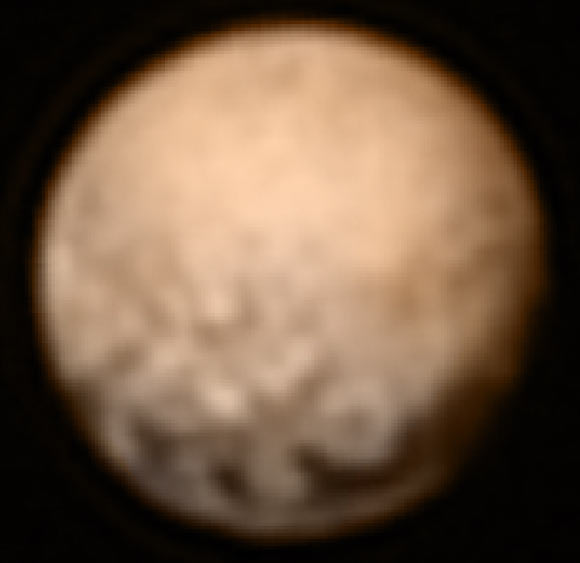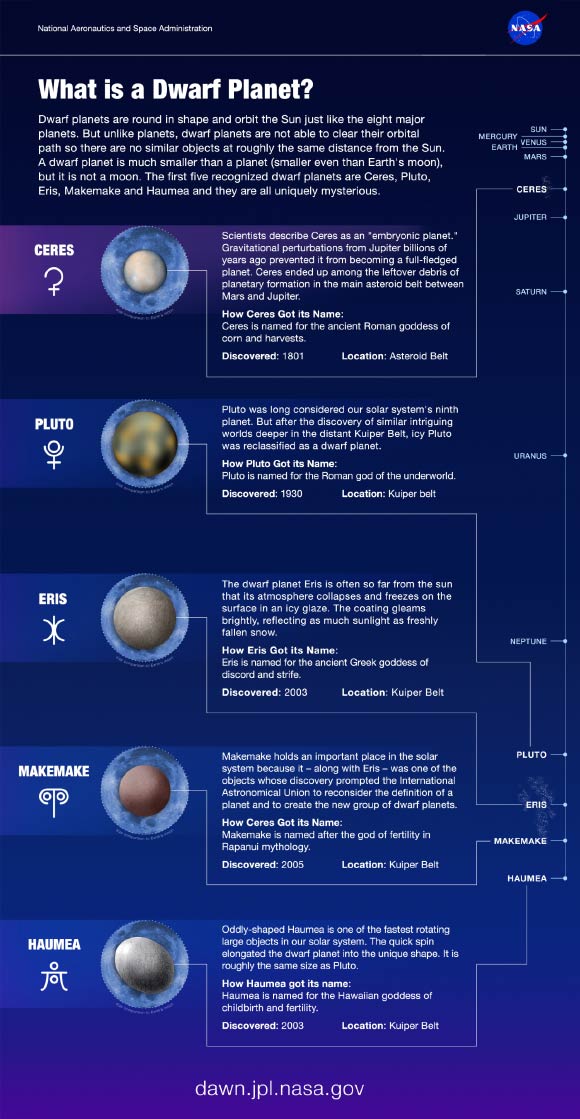A new color image from NASA’s New Horizons spacecraft shows a series of striking dark regularly-spaced spots along Pluto’s equator.

NASA’s New Horizons spacecraft obtained this image on 01 July 2015 from a distance of 7.8 million miles (12.5 million km), prior to the July 4 anomaly that sent the probe into safe mode. Image credit: NASA / Johns Hopkins University Applied Physics Laboratory / Southwest Research Institute.
Researchers have yet to see anything quite like Pluto’s dark spots; their presence has piqued the interest of planetary scientists involved in the New Horizons mission, due to the remarkable consistency in their spacing and size.
Each of the spots is approximately 300 miles (480 km) in diameter, with a surface area that’s roughly the size of the state of Missouri.
While their origin is uncertain for now, the answer may be revealed as New Horizons continues its approach to the Pluto system.
“It’s a real puzzle – we don’t know what the spots are, and we can’t wait to find out,” said Dr Alan Stern of the Southwest Research Institute, principal investigator for New Horizons.

What is a dwarf planet? According to the International Astronomical Union, a dwarf planet is a celestial body that orbits the Sun, has enough mass to assume a nearly round shape, has not cleared the neighborhood around its orbit and is not a moon. Image credit: JPL / NASA.
“Also puzzling is the longstanding and dramatic difference in the colors and appearance of Pluto compared to its darker and grayer moon Charon.”
Dr Stern and his colleagues combined the July 3 black-and-white image of Pluto from New Horizons’ Long-Range Reconnaissance Imager (LORRI) with lower-resolution color data from the spacecraft’s Ralph instrument to produce this view.
New Horizons is now less than 5.6 million miles (9 million km) from Pluto and its five moons.







